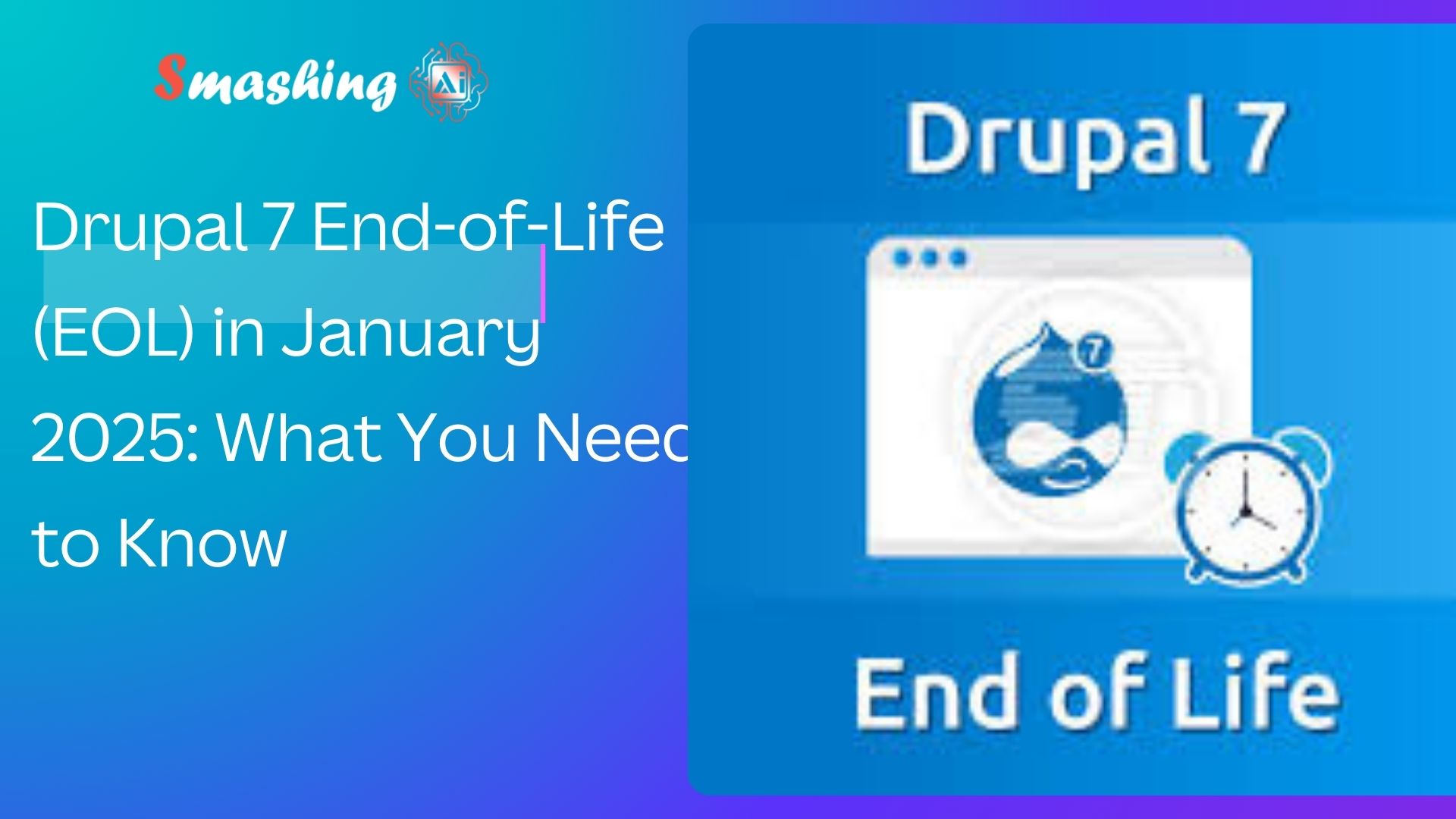
Drupal 7 End-of-Life (EOL) in January 2025: What You Need to Know


December 26, 2024
As of January 5, 2025, Drupal 7 has officially reached its End-of-Life (EOL), marking a pivotal moment for numerous websites that have relied on this robust content management system (CMS) since its release in 2011. This transition carries significant implications for site security, compliance, and overall functionality. In this comprehensive guide, we'll delve into what Drupal 7's EOL entails, the risks of continuing to use it, available options for site owners, and address frequently asked questions to assist you in navigating this critical period.
Understanding Drupal 7's End-of-Life
The term "End-of-Life" signifies that Drupal 7 will no longer receive official support from the Drupal community. This includes the cessation of security updates, bug fixes, and enhancements. While your Drupal 7 website will continue to function, the absence of these critical updates exposes it to increased security vulnerabilities and potential compatibility issues with newer technologies. Furthermore, maintaining compliance with standards such as FedRAMP, PCI, HIPAA, and SOC 2 becomes challenging without ongoing support.
Why Is Drupal 7 Being Retired?
Drupal 7 has been a cornerstone in the CMS landscape for over a decade. However, as technology evolves, so do the requirements for modern web development. The Drupal community has shifted its focus to newer versions, like Drupal 10 and the forthcoming Drupal 11, which offer enhanced features, improved security, and a more modern architecture. Retiring Drupal 7 allows the community to allocate resources effectively and continue innovating on these advanced platforms.
Key Dates Leading Up to Drupal 7's EOL
February 23, 2022: Announcement of Drupal 7's EOL extension.
August 1, 2023: Commencement of reduced support for moderately critical issues and other support changes.
January 5, 2025: Official end-of-life date for Drupal 7.
Risks of Continuing to Use Drupal 7 Post-EOL
Remaining on Drupal 7 beyond its EOL date presents several risks:
Security Vulnerabilities: Without regular security patches, your site becomes susceptible to exploits and attacks, potentially compromising sensitive data.
Compliance Issues: Many industries require adherence to strict security standards. An unsupported CMS can lead to non-compliance with regulations like HIPAA or PCI, resulting in legal and financial repercussions.
Compatibility Challenges: As web technologies advance, older systems may not integrate seamlessly with new tools, plugins, or hosting environments, leading to functionality issues or degraded performance.
Limited Support: The Drupal community's focus will shift entirely to supporting newer versions, making it difficult to find assistance or resources for Drupal 7-related issues.
Options for Drupal 7 Site Owners
If your website is still operating on Drupal 7, consider the following pathways:
Migrate to Drupal 10 or 11:
Upgrading to the latest Drupal version ensures continued support, access to new features, and enhanced security. This migration involves:
Site Audit: Evaluate your current site's content, modules, and custom code to determine what needs to be updated or replaced.
Module Compatibility: Identify contributed modules in use and check for their availability or alternatives in the newer Drupal versions.
Theme Redevelopment: Drupal 10 and 11 utilize different theming engines, necessitating a redesign or significant adjustments to your site's theme.
Data Migration: Use Drupal's migration tools to transfer content and configurations to the new version.
While this process requires careful planning and resources, it positions your site for long-term stability and growth.
Engage Extended Support Programs:
For organizations unable to migrate immediately, certain vendors offer extended support services for Drupal 7. These programs provide security updates and assistance beyond the official EOL date, buying you additional time to plan and execute a migration strategy. It's essential to research and select a reputable provider to ensure continued protection.
Explore Alternative CMS Platforms:
Depending on your organization's needs, transitioning to a different CMS might be a viable option. Platforms like WordPress, Joomla, or proprietary systems could offer features more aligned with your objectives. This route involves:
Requirement Analysis: Assess your website's functionalities to determine the necessary features in a new CMS.
Platform Evaluation: Research potential CMS options, considering factors like scalability, ease of use, community support, and cost.
Migration Planning: Develop a comprehensive plan to move content, redesign the site, and train staff on the new system.
While this approach can be resource-intensive, it may result in a more tailored solution for your organization's future.
Preparing for Migration: Key Steps
Transitioning from Drupal 7 requires meticulous preparation:
Conduct a Comprehensive Site Audit:
Inventory all content types, modules, themes, and custom code. Identify obsolete or redundant elements and determine essential features for the new site.
Develop a Migration Strategy:
Based on the audit, outline a detailed plan addressing timelines, resource allocation, potential challenges, and risk mitigation strategies.
Assemble a Skilled Team:
Engage experienced drupal developers familiar with Drupal migrations or the chosen CMS platform.
Frequently Asked Questions (FAQs)
Will my Drupal 7 site stop working after January 5, 2025?
No, your site will continue to function. However, without security updates, it becomes increasingly susceptible to vulnerabilities and may not comply with current web standards.
What risks do I face if I remain on Drupal 7 post-EOL?
Continuing to use Drupal 7 exposes your site to security threats, potential data breaches, and compatibility issues with newer technologies. Additionally, it may lead to non-compliance with standards such as HIPAA and SOC 2.
How complex is the migration process to a newer Drupal version?
Migrating from Drupal 7 to a newer version involves a comprehensive process, including content auditing, module compatibility checks, and theme redevelopment. While it requires significant effort, the result is a more secure and robust website.
Are there resources available to assist with migration?
Yes, the Drupal community and various development agencies offer tools, guides, and services to facilitate the migration process. Engaging with experienced professionals can streamline the transition and ensure best practices are followed.
Conclusion
The End-of-Life of Drupal 7 necessitates prompt action from website owners to safeguard their digital assets. Evaluating your current setup, exploring migration paths, and leveraging available resources are critical steps to maintain a secure and functional online presence in the evolving digital landscape.